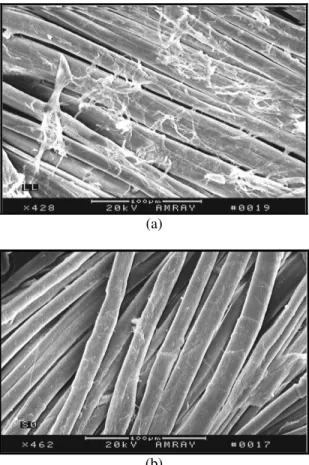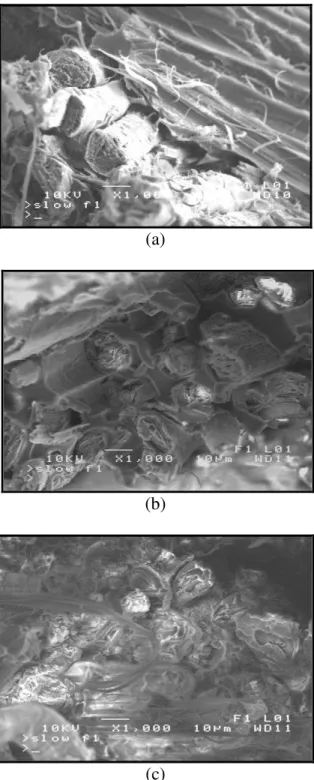Publisher’s version / Version de l'éditeur:
Proceedings. The American Conposites Manufacturers Association: Composites
& Polycon 2009, 2010
READ THESE TERMS AND CONDITIONS CAREFULLY BEFORE USING THIS WEBSITE. https://nrc-publications.canada.ca/eng/copyright
Vous avez des questions? Nous pouvons vous aider. Pour communiquer directement avec un auteur, consultez la
première page de la revue dans laquelle son article a été publié afin de trouver ses coordonnées. Si vous n’arrivez pas à les repérer, communiquez avec nous à PublicationsArchive-ArchivesPublications@nrc-cnrc.gc.ca.
Questions? Contact the NRC Publications Archive team at
PublicationsArchive-ArchivesPublications@nrc-cnrc.gc.ca. If you wish to email the authors directly, please see the first page of the publication for their contact information.
NRC Publications Archive
Archives des publications du CNRC
This publication could be one of several versions: author’s original, accepted manuscript or the publisher’s version. / La version de cette publication peut être l’une des suivantes : la version prépublication de l’auteur, la version acceptée du manuscrit ou la version de l’éditeur.
Access and use of this website and the material on it are subject to the Terms and Conditions set forth at
Natural Fiber Composites with Enhanced Fire Resistance
Ton-That, M.-T.; Ngo, T.-D.; Singh, R. P.; Hu, W.; Denault, J.
https://publications-cnrc.canada.ca/fra/droits
L’accès à ce site Web et l’utilisation de son contenu sont assujettis aux conditions présentées dans le site LISEZ CES CONDITIONS ATTENTIVEMENT AVANT D’UTILISER CE SITE WEB.
NRC Publications Record / Notice d'Archives des publications de CNRC:
https://nrc-publications.canada.ca/eng/view/object/?id=07c00b27-785b-4fa6-a63a-f3d509972531 https://publications-cnrc.canada.ca/fra/voir/objet/?id=07c00b27-785b-4fa6-a63a-f3d509972531
COMPOSITES & POLYCON 2010
American Composites Manufacturers Association
February 9-11, 2010
Las Vegas, Nevada USA
Natural Fiber Composites with
En-hanced Fire Resistance
by
M.-T. Ton-That1,2*, T.-D. Ngo1, R. P. Singh1, W. Hu1,
and J. Denault1
1
Industrial Materials Institute, National Research Council Canada, 75 blvd de Mortagne, Boucherville, Quebec,
Canada J4B 6Y4; 2Mechanical and Industrial
Engineer-ing, Concordia University, Montreal, Quebec, Canada
Abstract
Vegetable fiber composites have recently received very much interest in various applications, including au-tomotive, aerospace and construction. However, one of the most challenges of these composites which limit their application in certain cases is their low fire resistance.
A new approach in composite formulation at low cost using nanoclays has been developed to improve the fire resistance without having negative effect on the me-chanical performance of the composite. The results dem-onstrate that the right chemistry of the nanoclay can and also the method to incorporate those ingredients into the composites play determined roles to control the balance between the composite fire resistance and the mechanical properties.
Introduction
Although the pioneering work in natural fiber ther-moplastic with considerable awareness to preserve envi-ronment, great efforts across the globe are continue to search for renewable sources of material available on the earth. The ultimate goal is to replace petroleum materials which are depleting rapidly every year. It had pushed the investigation on the replacement of renewable natural fibers, like flax, for glass fibers in the production of po-lymer composites.
Flax fibers show very good intrinsic mechanical properties as well as low cost, low density (1.4-1.5
g/cm3), low dermal and respiratory irritation and tool
wear. Those make them become very attractive as com-pared to glass fibers. However, flax fibers like most natu-ral fibers do not exhibit consistency in properties. The fiber quality widely depends upon their genotype, as well
as agriculture conditions, soil, topographic and climatic condition of the region. In fact, natural fiber is not a sin-gle filament but rather a bundle. Further the method adopted to remove fibers from the plant stem dictates de-velopment of kink band or nodes (1, 2). Besides that, the flax fiber exhibits hydrophilic nature, poor fiber-matrix adhesion, low heat stability and high flammability that lead to negative impacts on the composites performance (3-6) thus hamper its potential in certain application un-der adverse environmental and designed conditions (7-9).
The use of clays to produce nanocomposite has been extended into various polymer systems including epoxies (10, 11). Significant improvement in mechanical proper-ties and fire resistance can be attributed to the special structure and chemistry of the organo-nanoclays.
This present work was carried to address the limita-tion of natural of the flax fiber epoxy composite in term of fire resistance by using nanoclays.
Experimental
The epoxy resin used was the standard DGEBA (diglycidyl ether of bisphenol A) resin EPON™ 828 ob-tained from Resolution Performance Products. The esin was cured with the polyoxypropylene diamine hardener Huntsman LLC Jeffamine® D-230 at a level of 32 phr. The organoclay used was Cloisite® 30B from Southern Clay Products, Inc. (Gonzalez, TX, USA). Satin plain weave flax fabric was supplied by Moss Composites (Belgium). The epoxy-clay nanocomposite of 2wt% clays was prepared as described elsewhere (12).
Fiber properties can be modified in many ways in-cluding physical stretching, thermo-treatment and chem-ical treatment. But surface properties are considerably changed by chemical treatment (13). In this work the fibers were treated with 2% solution of NaOH at 80 °C for 2 h. Fibers then were dried at room temperature for at least 6 hrs, then in the oven at temperature of 140 °C for about 2 hours to remove the humidity before use.
Empirical mixture of resin and hardener was mixed for 5 min. The mixture was subjected to a vacuum oven set at 65°C for 5 min for air removal. It was then used to impregnate the flax fibers by hand lay-up with much care in order to prevent any misalignment of the fibers. Final-ly, hydraulic press was used to complete the fabrication of the composites following specific temperature and pressure profiles given in Figure 1. Composite descrip-tions are shown in Table 1.
JEOL JSM-6100 SEM at a voltage of 10kV was used to observe the surface of fibers before and after treatment with NaOH. Fracture surfaces of composites after mechanical test were also analyzed by SEM.
The tensile and interlaminate shear strength proper-ties of the epoxy/flax composites were determined at room temperature and 50% relative humidity according to ASTM D638-03 and ASTM D 2344-00 on an Instron 5500R machine, with crosshead speeds of 5.0 mm/min, 1.3 mm/min respectively.
ASTM D3801-06 test for measuring the comparative burning characteristics of the composites in vertical posi-tion was performed on specimens with dimensions of 13 x 125 cm.
Results and Discussion
The quality of dispersion of the epoxy nanocompo-site was given in Figure 2. The absence of the peak in the XRD curve of the nanocomposite indicates a good exfol-iation of the clay in the epoxy matrix. As a result of good exfoliation the nanocomposites have greater tensile strength and modulus as compare to those of the matrix (Figure 3).
SEM images of the flax fibers before and after treatment with 2% solution of NaOH are shown in Figure 4. It indicates that the surface of fiber before treatment was not clean and consists of contaminants on the sur-face as can be seen on Figure 4a. The result shows that after treatment of the fiber with 2% NaOH solution for 2 h at 80°C, the outer surface of the fibers is quite smooth as impurities and contaminants on the fiber surface have been removed (Figure 4b). In addition, fiber tow opening is also observed on the treated fibers thus allowing better impregnation with the matrix in the later step.
Figure 5 shows the short beam shear strength of the epoxy flax composites. An improvement of about 60% over the reference (untreated fibers in the absence of clays in the epoxy matrix) is observed for treated fibers in the presence and absence of nanoclays and also the untreated fibers in the presence of clays. However, the greatest improvement was found for non treated fibers in epoxy-clay nanocomposite matrix (approximately 85%). The tensile properties of the composites are shown in Figure 6. From the tensile property graphs it can be seen that in the absence of nanoclays in the matrix, as com-pared to the untreated fibers, the stress bearing capacity of the composite with the treated fibers increases to ap-proximately 15 % and similarly there is an increase in the young’s modulus and strain. Moreover, there is also improvement in the stress and modulus when nanoclays were added to the matrix for the untreated fiber. In prin-ciple the composites properties are mainly controlled by the fiber properties. However, the presence of clay can modify the fiber matrix-interface that can lead to better load transfer from matrix to fiber, resulting in better composite properties. It is also observed that the pres-ence of nanoclay in the composite with treated fiber does not improve the composite properties. The reason for that
remains unclear. Further experiment should be carried out to get a better understanding. It may be speculated that the alkali generate negative charge on the treated fi-ber surface thus can alter the role of the nanoclay, which also has negative charge, at the fiber-matrix interface.
SEM images of the tensile fracture surface of spe-cimen of flax fiber composites are shown in Figure 7. Figure 7a shows that the interfacial adhesion between flax fibers and epoxy matrix of composite in the absence of clays is not very good. The fibers were pulled out after test with clean fiber surface and not much adhering epoxy matrix on their surface. The clean and smooth cavities after the pulling of the fibers suggest poor inter-face. Figures 7b and 7c show that better surface contact is achieved between the fibers and the matrix for the treated flax fiber epoxy composites. And, this seems much better for the non treated flax fiber epoxy in the presence of nanoclay. This good interfacial adhesion can improve the stress transfer ability from the matrix to the fiber, which results in a better mechanical property.
The burning characteristics of the composites were shown in Figure 8. The treated fiber composite burned at a slower rate than that of the untreated one. It may be due to the removal of impurities and contaminants on the fi-ber surface. It is also interesting to observe that the pres-ence of nanoclay in the matrix has improved very signif-icantly the fire resistance of the composites regardless the fiber was treated or not. This can be explained that the nanoclay has more affinity with the fiber than the matrix thus the clay layers can migrate to closer the fiber surface thus providing a protection barrier from the dif-fusion of oxygen from outside into the fiber during the burning process. The presence of a small amount of na-noclay (2wt%) in the epoxy matrix has a significant im-provement on the fire resistance of the composites. As nanoclay is not very expensive such low content does not increase the cost very much, thus this finding should be interesting for industrial application as the alternative solution for halogen-based flame retardants.
Conclusions
Incorporation of a small amount of nanoclay in the epoxy resin significantly improves the mechanical prop-erties and the fire resistance of the flax fiber composite. The observed improvements in composite strength, mod-ulus and short beam shear strength can be interpreted by the nanoclay role in the improvement of the load transfer from the matrix to the fibers and hence enhancement of the interfacial properties. The improvement in fire resis-tance can be due to the barrier property of the nanoclay layers. This study confirms that nanoclays can be used to upgrade the mechanical performance and fire resistance of natural fiber composites without increase very much the materials cost.
Acknowledgements
The authors would like to thank the financial sup-port from different research programs of the Canadian Government via the National Bioproduct Program 2 of the National Research Council of Canada and the ABIP-NAFGEN of the Agriculture Agri-Food Canada. Rajind-er Pal Singh would like to thank the National Science Research Council Canada for the financial support for the research fellowships (Grant# N00784).
Author(s):
Ton-That, a Research Officer at the NRC and an Adjunct Professor at Concordia University, holds 10 pa-tents and published more than 60 papers in the field of composites.
References
1. A. J. Norton, S. J. Bennett, M. Hughes, J. P. R. E. Dimmock, D. Wright, G. Newman, I. M. Harris & G.
Edwards-Jones “Determining the physical properties of
flax fibre for industrial applications : the influence of agronomic practice” Ann. Appl. Bio. 2006, 149, 15-25
2. R. Kohler, R. Alex, R. Brielmann, & B. Ausperger “A
new kinetic model for water sorption isotherms of cellu-losic materials”. Macromol. Symp. 2006, 244, 89-96 3. G. Romhany, J. Karger-Kocsis, & T. Czigany “Tensile fracture and failure behaviour of thermoplastic starch with unidirectional and cross-ply flax fiber
reinforce-ments”. Macromol. Mater. Eng. 2003,288, 699-707
4. S. G. Lee S.–S. Choi, W. H. Park, & D. Cho “Charac-terization of surface modified flax fiber and their bio-composites with PHB”. Macromol. Symp. 2003, 197, 89-99
5. M. J. A. Van Den Oever, H. L. Bos, & K. Molenveld “Flax fiber physical structure and its effect on composite properties: Impact strength and thermo-mechanical prop-erties”. Angew. Makromol. Chem. 1999, 272, 71-76 6. I. Van de Weyenberg, T. Chi Truong, B. Vangrimde, & I. Verpoest “Improving the properties of UD flax fibre reinforced composites by applying an alkaline fibre treatment”. Comp. A Appl. Sci. Manufac. 2006, 37, 1368-1376
7. K. Van De Velde, & E. Baetens “Thermal and me-chanical properties of flax fiber as potential composite reinforcement”. Macromol. Mater. Eng. 2001, 286, 342-349
8. G. Romhany, J. Karger–Kocsis, & T. Czigany “Ten-sile and fracture behaviour of technical flax fibers”. J. Appl. Polym. Sci. 2003, 90, 3638-3645
9. E. Zini, M. Baiardo, L. Armelao, & M. Scandola “Biodegradable polyesters reinforced with surface-modified vegitable fibers”. Macromol. Biosci. 2004, 286-295
10. Kornmann X., Linberg H. and Berglund L. A., “Syn-thesis of epoxy-clay nanocomposites- Influence of the
nature of the curing agent on structure”. Polym. 2001,
42, 4493-4499
11. Kornmann X., Lindberg H. and Berglund L. A., “Synthesis of epoxy–clay nanocomposites: influence of the nature of the clay on structure”. Polym. 2001, 42, 1303-1310
12. T.-D. Ngo, M.-T. Ton-That, S.V. Hoa, K.C. Cole “Preparation and properties of epoxy nanocomposites. I. The effect of premixing on dispersion of organoclay”. Polym. Eng. Sci. 2009, 49(4), 666-672.
13. A. Arbelaiz, G. Cantero, B. Fernandez, & I. Mondra-gon “Flax Fiber surface modification: Effects on fiber physic mechanical and flax/polypropylene interface properties” Society of Plastic Engineering 2005.
Table 1. Composite descriptions
Designation Description
NT-F+E Non treated fibers with epoxy
NT-F+NC-E Non treated fibers with epoxy
na-nocomposite
T-F+NC-E Treated fibers with epoxy
nano-composite
T-F+E Treated fibers with epoxy
Figure 1. Optimized pressure and temperature
profiles
0 500 1000 1500 2000 2500 3000 2 4 6 8 10 In ten si ty (C o u n ts ) 2(o) Cloisite 30B ENC 1.85 nm
Figure 2. XRD curves of clay and the epoxy
na-nocomposite.
Figure 3. (a) Tensile modulus and (b) tensile
strength of the epoxy nanocomposites.
(a)
(b)
Figure 4. SEM photos for (a) non-treated and (b)
treated flax fibers.
3000 3300 3600 3900 4200 4500 0 2 4 6 T e n s ile M o d u lu s ( M P a )
(a)
Clay Loading (%wt ) 55 60 65 70 75 80 0 2 4 6 T e n s ile S tr e n g th ( M P a ) Clay Loading (%wt )(b)
Short Beam Shear Strength
N T -F +E N T -F +N C -E T -F +N C -E T -F +E S B S [ M P a ] 0 10 20 30 40Figure 5. Short beam shear strength of the
com-posites.
Stress at Max.Load
NT -F +E NT -F +NC -E T -F +NC -E T -F +E S tr e s s a t M a x .L o a d [ M P a ] 0 20 40 60 80 100 120 140 160 180 200(a)
Young's Modulus
NT -F +E NT -F +NC -E T -F +NC -E T -F +E Y o u n g 's M o d u lu s [ M P a ] 0 2000 4000 6000 8000 10000 12000 14000 16000 18000 20000(b)
Figure 6. (a) Tensile strength and (b) tensile
modulus of the composites.
(a)
(b)
(c)
Figure 7. SEM micrographs for (a) non-treated
flax
epoxy composite, (b) treated flax epoxy
composite; and (c) non-treated flax-epoxy
nanocomposite
Comparative Burning Characteristics
NT -F +E NT -F +NC -E T -F +NC -E T -F +E T im e [ s ] 0 50 100 150 200 250 300



